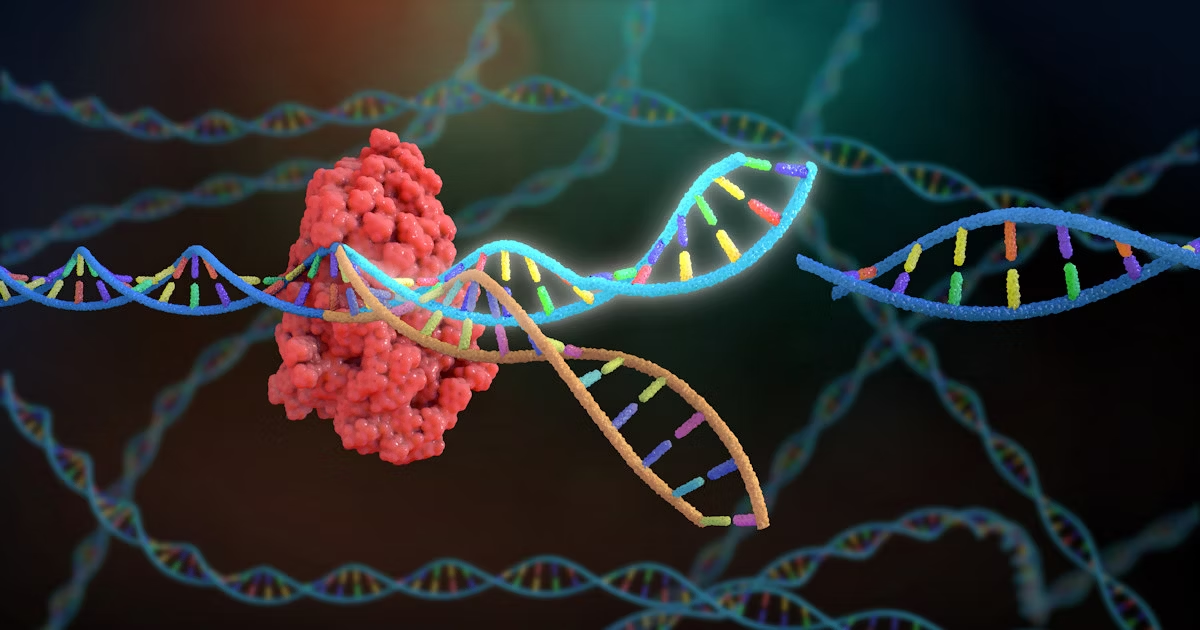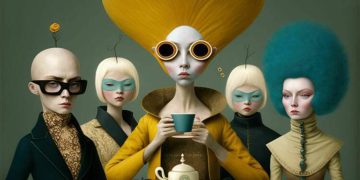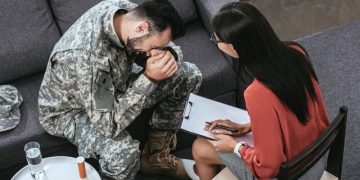Introduction
Gene editing is one of the most exciting and transformative fields in biotechnology, with the potential to revolutionize medicine, agriculture, and even environmental science. Among the most promising technologies in this area is CRISPR-Cas9, a powerful tool that allows scientists to make precise changes to the DNA of living organisms. Since its discovery, CRISPR has opened up new possibilities for treating genetic disorders, enhancing crop resilience, and even advancing our understanding of complex diseases. In this article, we will explore the latest developments in gene editing, focusing particularly on the impact of CRISPR technology on biomedicine, its applications in gene therapy, and its potential to shape the future of healthcare.
1. Understanding Gene Editing: The Basics of CRISPR Technology
Before diving into its applications, it’s important to understand what gene editing is and how CRISPR works. Gene editing involves making intentional changes to an organism’s genetic code, typically by cutting and modifying specific strands of DNA. While there are various gene-editing techniques, CRISPR-Cas9 has gained significant attention due to its simplicity, precision, and versatility.
1.1 What is CRISPR?
CRISPR stands for “Clustered Regularly Interspaced Short Palindromic Repeats,” a sequence of DNA found in bacteria that functions as an immune system. The CRISPR system is composed of two main components:
- Cas9 Protein: An enzyme that acts like molecular scissors, cutting DNA at specific locations.
- Guide RNA: A piece of RNA that guides the Cas9 protein to the exact location in the DNA that needs to be edited.
Together, these components enable scientists to target specific genes and either “cut” them to deactivate them, replace them with new sequences, or even correct mutations in the case of genetic diseases.
1.2 How CRISPR Revolutionized Gene Editing
Traditional gene editing methods were slow, costly, and often imprecise. CRISPR, on the other hand, has made gene editing faster, more cost-effective, and much more accurate. Since its introduction in 2012, CRISPR has quickly become a standard tool in research labs around the world, facilitating advances in areas like genetics, cancer research, and even regenerative medicine.
2. Gene Therapy: A New Era in Treating Genetic Disorders
One of the most exciting applications of CRISPR technology is its potential to treat genetic disorders. Gene therapy involves replacing, inactivating, or editing genes within a patient’s cells to cure or alleviate disease. CRISPR holds immense promise for gene therapy because of its ability to correct genetic mutations at the source, potentially curing conditions that were once thought to be incurable.
2.1 CRISPR and Genetic Diseases
Many genetic disorders, such as sickle cell anemia, cystic fibrosis, and muscular dystrophy, are caused by specific mutations in the DNA. With CRISPR, scientists can potentially “fix” these mutations at the molecular level. Several breakthroughs in clinical trials have shown promising results:
- Sickle Cell Anemia: In 2020, a patient with sickle cell anemia was successfully treated using CRISPR technology to edit the patient’s own stem cells. The treatment aimed to reactivate a gene that produces fetal hemoglobin, compensating for the defective hemoglobin that causes sickle cell disease. The patient experienced a significant improvement in symptoms and had a reduction in disease-related complications.
- Cystic Fibrosis: Researchers have explored using CRISPR to correct the genetic mutations responsible for cystic fibrosis, a life-threatening condition affecting the lungs and digestive system. While still in the experimental stages, early results indicate that CRISPR could one day offer a permanent cure for this condition.
- Muscular Dystrophy: In Duchenne muscular dystrophy (DMD), CRISPR is being used to repair the defective gene responsible for muscle degeneration, potentially halting the progression of this debilitating disease.
2.2 Challenges in Gene Therapy
Despite its potential, CRISPR-based gene therapy faces several hurdles:
- Delivery Systems: One of the biggest challenges in gene therapy is delivering CRISPR components into cells effectively and safely. Various delivery methods, such as viral vectors, lipid nanoparticles, and direct injection, are being tested, but ensuring that CRISPR reaches the correct cells without causing adverse effects remains a major issue.
- Ethical Concerns: Germline editing (editing the genes of embryos) is controversial because of the potential for unintended consequences, including off-target mutations and ethical concerns about “designer babies.” Regulations around germline editing are still evolving, and global consensus on this issue remains uncertain.

3. CRISPR in Cancer Research: Targeting Tumors at the Genetic Level
Cancer research is another area where CRISPR technology is making a significant impact. The ability to edit genes within cancer cells opens up new possibilities for targeted therapies and personalized medicine. CRISPR is being used in various ways to advance cancer research and treatment:
3.1 Targeting Oncogenes
Oncogenes are genes that have the potential to cause cancer when mutated or expressed at high levels. By using CRISPR to deactivate or repair these genes, researchers can potentially stop the development of tumors or shrink existing ones.
- KRAS Mutation: KRAS is a commonly mutated gene in several cancers, including lung and pancreatic cancers. CRISPR is being used to directly target and edit KRAS mutations, offering a potential pathway to treatment for cancers that were previously difficult to treat.
3.2 Immunotherapy Enhancement
Immunotherapy is a promising cancer treatment that boosts the body’s immune system to recognize and attack cancer cells. CRISPR is being used to enhance immunotherapy by editing immune cells, such as T-cells, to better recognize cancer cells.
- CAR-T Therapy: Chimeric Antigen Receptor T-cell (CAR-T) therapy involves modifying a patient’s T-cells to target and kill cancer cells. CRISPR is being used to create more effective and longer-lasting CAR-T cells, improving the success rates of this treatment.
3.3 CRISPR for Personalized Medicine
One of the most exciting prospects for CRISPR in cancer treatment is the development of personalized medicine. By sequencing a patient’s cancer genome, doctors can use CRISPR to develop a tailored treatment plan, targeting the specific genetic mutations responsible for that patient’s cancer.
4. Expanding Beyond Medicine: CRISPR in Agriculture and Environmental Science
CRISPR’s potential extends beyond medicine. In agriculture, it is being used to create genetically modified crops that are more resistant to disease, drought, and pests, while also improving nutritional content.
4.1 Genetically Modified Crops
CRISPR has made it possible to edit the genomes of crops in a way that was previously not possible with traditional GMOs. With CRISPR, researchers can introduce beneficial traits like disease resistance or drought tolerance into crops with greater precision and fewer unintended consequences.
- CRISPR-edited Crops: In 2020, the U.S. government approved the sale of the first CRISPR-edited plant, a non-browning mushroom, which was edited to resist browning caused by oxidation. Similarly, researchers are working on editing rice and wheat genomes to improve disease resistance and yield.
4.2 Environmental Applications: Fighting Climate Change
CRISPR is also being explored for its potential in environmental applications. For example, researchers are investigating its use in engineering microbes to capture CO2 from the atmosphere, or even modifying plants to absorb more carbon dioxide and help combat climate change.
- Gene-Edited Plants for Carbon Sequestration: Scientists are working on creating plants that can store more carbon in their roots, potentially helping to offset emissions and contribute to the fight against global warming.
5. The Ethical and Regulatory Landscape of CRISPR Technology
While CRISPR offers exciting possibilities, it also raises important ethical and regulatory concerns. As gene editing technology advances, discussions surrounding its responsible use are becoming increasingly important.
5.1 Germline Editing and Designer Babies
One of the most contentious ethical issues is germline editing, which involves editing the DNA of embryos or reproductive cells. Although it holds the potential to eliminate inherited genetic diseases, it also opens the door to altering traits such as intelligence, appearance, and other characteristics, leading to concerns about “designer babies” and the potential for genetic inequality.
5.2 Global Regulations and Policies
As CRISPR technology evolves, regulatory bodies around the world are grappling with how to establish guidelines for its use. While some countries have already started to develop frameworks for gene therapy, others are more cautious about moving forward with regulatory approval.
- International Cooperation: There is a growing need for international cooperation to ensure that CRISPR technology is used responsibly, with proper oversight and ethical considerations.
Conclusion
CRISPR and gene editing technology are poised to transform the fields of medicine, agriculture, and environmental science, offering new solutions to longstanding challenges. From curing genetic diseases to enhancing crops and fighting climate change, the potential applications are vast. However, as with any powerful technology, it is essential to approach gene editing with caution and responsibility, ensuring that its benefits are maximized while minimizing risks. As the technology continues to advance, CRISPR is set to shape the future of biotechnology in profound ways.


















































Discussion about this post